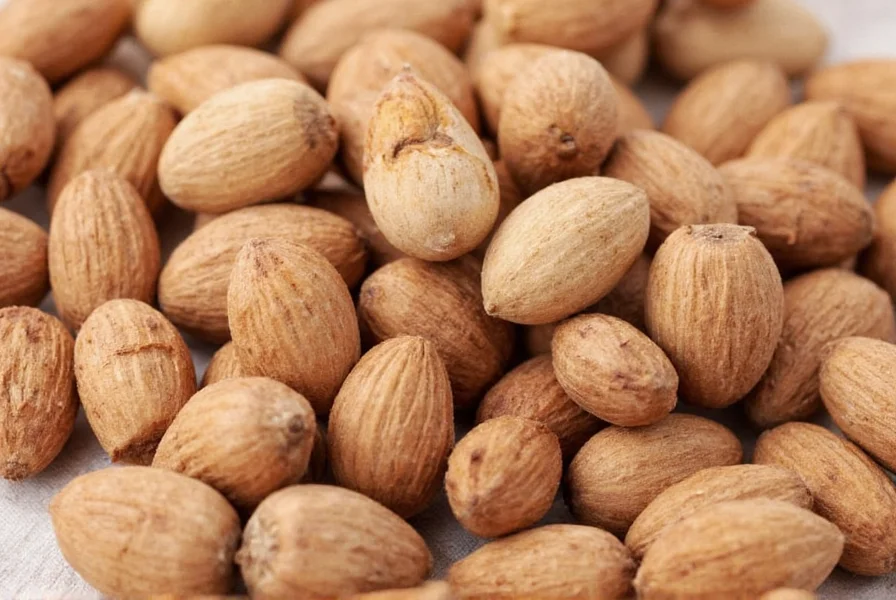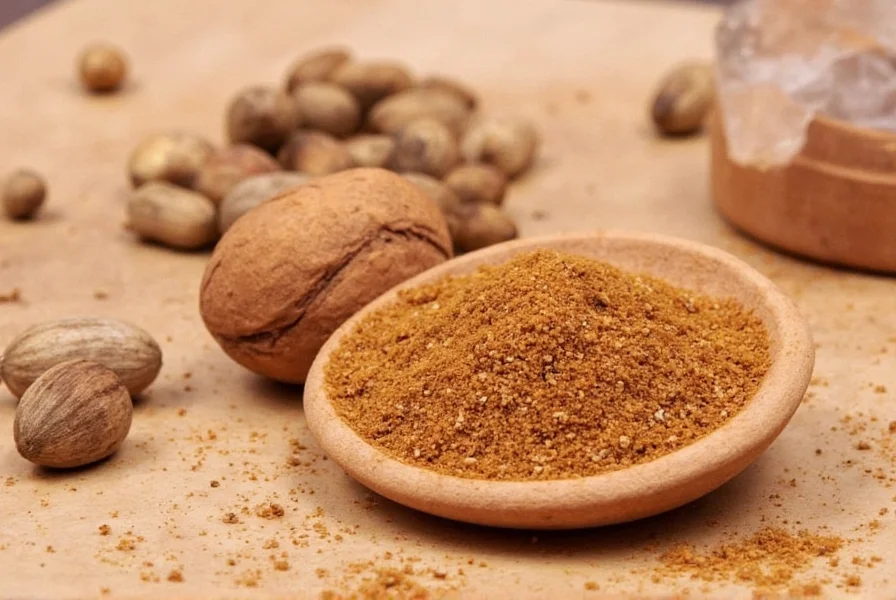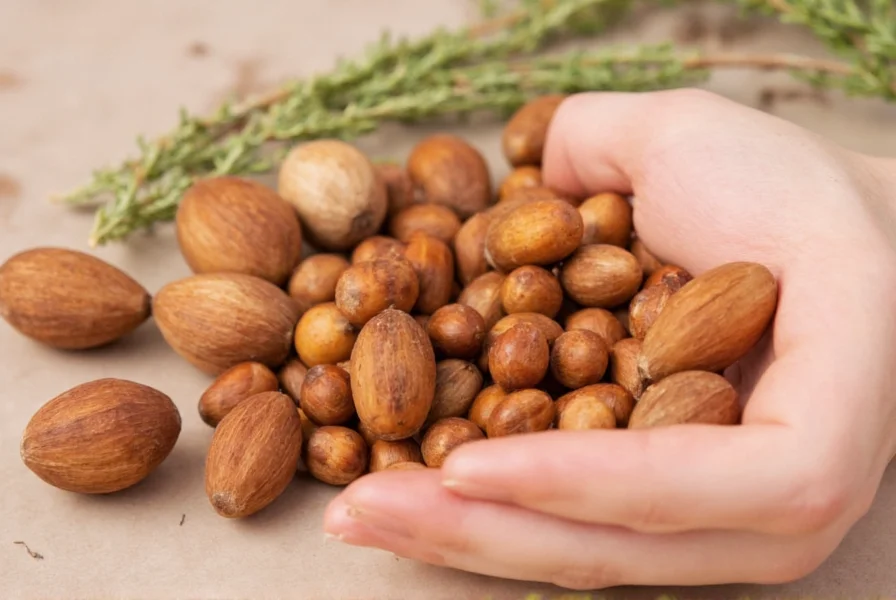Yes, nutmeg can be toxic when consumed in large quantities. While safe as a culinary spice in normal food amounts (typically 1/4 to 1/2 teaspoon), consuming 1-2 whole nutmegs (about 5-15 grams) or more can cause poisoning symptoms. The toxic compound myristicin becomes dangerous at these higher doses, potentially causing hallucinations, rapid heartbeat, nausea, and in severe cases, organ damage.
Understanding Nutmeg's Dual Nature: Spice and Potential Toxin
Nutmeg occupies a unique position in the culinary and medicinal worlds. This aromatic seed from the Myristica fragrans tree has been prized for centuries in kitchens worldwide. However, beneath its pleasant flavor lies a complex chemical profile that demands respect. Understanding is nutmeg toxic requires examining both its safe culinary uses and its potential dangers when misused.
The Science Behind Nutmeg Toxicity
Nutmeg contains several bioactive compounds, but myristicin is the primary concern when discussing nutmeg poisoning symptoms. Myristicin is a phenylpropene that, in small amounts found in typical cooking, poses no risk. However, when consumed in larger quantities, it metabolizes into elemicin and other compounds that affect the central nervous system.
Other compounds contributing to nutmeg's effects include:
- Elemicin - Psychoactive compound
- Safrole - Carcinogenic in large amounts
- Terpenes - Contribute to the spice's aroma but can cause irritation
| Consumption Level | Amount | Effects |
|---|---|---|
| Typical Culinary Use | ⅛ - ½ teaspoon (0.5-2g) | No adverse effects; enhances flavor |
| Moderate Consumption | 1-2 teaspoons (2-5g) | Mild digestive discomfort possible |
| Toxic Threshold | 5-15g (1-2 whole nutmegs) | Nausea, dizziness, rapid heartbeat |
| Severe Toxicity | 20g+ (4+ whole nutmegs) | Hallucinations, organ damage, potential fatality |
Recognizing Nutmeg Poisoning Symptoms
When addressing how much nutmeg is toxic, it's crucial to recognize the symptoms of overdose. These typically appear 3-6 hours after consumption and can last up to 48 hours:
- Early symptoms: Dry mouth, thirst, facial flushing, nausea, dizziness
- Progressive symptoms: Rapid heartbeat (tachycardia), high blood pressure, abdominal pain
- Neurological effects: Anxiety, agitation, hallucinations, confusion, drowsiness
- Severe cases: Seizures, organ damage, loss of consciousness
These nutmeg overdose effects occur because myristicin affects neurotransmitter systems, particularly acetylcholine and serotonin pathways. The delayed onset often leads people to consume more, thinking the initial dose wasn't effective, which worsens the toxicity.
Vulnerable Populations and Special Considerations
Certain groups face higher risks from nutmeg and health risks:
- Children: More sensitive to toxins; even small amounts beyond culinary use can cause symptoms
- Pregnant women: High doses may stimulate uterine contractions
- Individuals with heart conditions: Nutmeg's cardiovascular effects can be dangerous
- People taking medications: Potential interactions with antidepressants, blood pressure medications
Parents often search is nutmeg toxic to children after accidental ingestion. While small amounts in food pose no risk, children consuming whole nutmegs require medical attention due to their lower body weight.

Medical Treatment for Nutmeg Overconsumption
If someone has consumed a potentially toxic amount of nutmeg, immediate action is necessary. Understanding nutmeg toxicity treatment can be lifesaving:
- Assess the situation: Determine how much was consumed and when
- Contact poison control or seek emergency medical help immediately
- Do not induce vomiting unless instructed by medical professionals
- Provide supportive care: Keep the person calm and hydrated
- Medical interventions may include activated charcoal, IV fluids, and medications to manage symptoms
Most cases of nutmeg side effects resolve with supportive care within 24-48 hours, but severe cases may require hospitalization. Never attempt to use nutmeg as a recreational drug - the risks far outweigh any perceived benefits.
Debunking Common Nutmeg Myths
Several misconceptions surround can nutmeg be poisonous. Let's address the most prevalent ones:
- Myth: Nutmeg is a safe natural high Reality: Nutmeg intoxication is unpleasant and potentially dangerous, not recreational
- Myth: All spice varieties have the same toxicity Reality: Nutmeg is uniquely problematic due to myristicin concentration; mace (from the same plant) has lower levels
- Myth: Cooking destroys nutmeg's toxic compounds Reality: Myristicin remains stable through typical cooking processes
- Myth: Nutmeg toxicity is immediately fatal Reality: While serious, fatalities are rare with proper medical care; the primary concern is severe discomfort and potential complications

Safe Culinary Practices with Nutmeg
When used properly, nutmeg enhances countless dishes without risk. Follow these guidelines for is nutmeg safe to eat in everyday cooking:
- Use freshly grated nutmeg from whole seeds for best flavor and control
- Limited to ⅛ to ½ teaspoon per recipe for standard dishes
- Never exceed 1 teaspoon in any single serving
- Store whole nutmeg in a cool, dark place to preserve quality
- Keep whole nutmeg out of children's reach due to choking hazard and potential misuse
Professional chefs understand that nutmeg's potency means a little goes a long way. The key to enjoying nutmeg consumption safety is moderation and respect for its chemical properties.
When to Seek Medical Help
Recognizing when nutmeg overdose effects require professional intervention is critical:
- Consumption of more than 2 whole nutmegs (or 5g+ of ground nutmeg)
- Persistent vomiting or severe abdominal pain
- Heart rate consistently above 100 beats per minute
- Confusion, hallucinations, or loss of consciousness
- Symptoms lasting more than 24 hours
Immediate medical attention prevents complications from nutmeg poisoning symptoms. Healthcare providers can manage symptoms effectively when cases are reported promptly.
Conclusion: Respecting Nutmeg's Dual Nature
The question is nutmeg toxic has a nuanced answer: it's safe in culinary amounts but potentially dangerous in larger doses. This distinction separates a beloved kitchen staple from a substance requiring caution. By understanding the threshold between safe use and toxicity, consumers can enjoy nutmeg's distinctive flavor while avoiding its risks. Always remember that when it comes to nutmeg, moderation isn't just a recommendation—it's a safety requirement.











 浙公网安备
33010002000092号
浙公网安备
33010002000092号 浙B2-20120091-4
浙B2-20120091-4